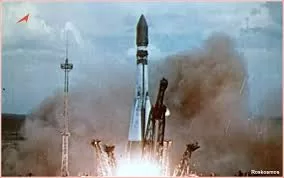On this day in space, June 19, 1963, the Vostok 5 and Vostok 6 missions returned to Earth. Vostok 5 was piloted by Valery Bykovsky, while Vostok 6 was piloted by Valentina Tereshkova, the first woman in space. The two spacecraft flew in close proximity to each other for three days, making it the first time that two humans had been in space at the same time.
The Vostok 5 and Vostok 6 missions were a major achievement for the Soviet space program and helped to solidify the Soviet Union’s lead in the Space Race. The missions also marked a major milestone for women’s rights, as Tereshkova’s flight inspired many young women to pursue careers in science and engineering.
Here is a more detailed look at the two missions:
- Vostok 5: Launched on June 14, 1963, Vostok 5 carried Bykovsky into orbit. He spent 5 days, 2 hours, and 50 minutes in space, setting a new record for the longest single spaceflight. During his time in orbit, Bykovsky conducted a number of experiments, including studying the effects of weightlessness on the human body.
- Vostok 6: Launched on June 16, 1963, Vostok 6 carried Tereshkova into orbit. She spent 3 days, 22 hours, and 50 minutes in space, making her the first woman in space. During her time in orbit, Tereshkova conducted a number of experiments, including studying the effects of weightlessness on the human body and the performance of women in space.
The safe return of Vostok 5 and Vostok 6 was a major victory for the Soviet space program. The missions demonstrated the Soviet Union’s ability to send humans into space and bring them back safely. They also showed that the Soviet Union was capable of launching multiple missions simultaneously.

The Vostok 5 and Vostok 6 missions were a major propaganda victory for the Soviet Union. They came at a time when the Cold War was at its height and the Soviet Union was competing with the United States for dominance in space. The missions helped to boost morale in the Soviet Union and showed the world that the Soviet Union was a leader in space exploration.
The Vostok 5 and Vostok 6 missions were also a major milestone for women’s rights. Tereshkova’s flight inspired many young women to pursue careers in science and engineering. She showed that women were just as capable as men of flying in space.
The Vostok 5 and Vostok 6 missions were a major achievement for the Soviet space program and a major milestone for women’s rights. They helped to solidify the Soviet Union’s lead in the Space Race and inspired many young people to pursue careers in science and engineering.

